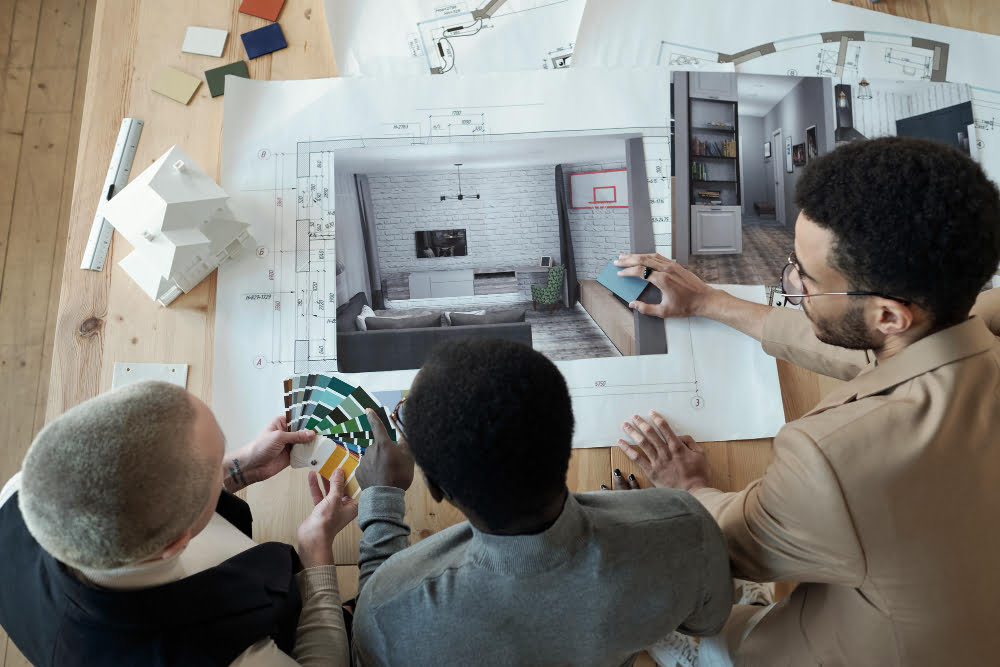Last updated on
Your home is more than just a place to live; it’s a reflection of your personality, style, and comfort. Whether you’ve recently moved into a new house or have been in your current one for years, there’s always room for improvement and enhancement.
The beauty of homeownership lies in the opportunity to make your space uniquely yours. From small tweaks to significant transformations, there are countless ways to enhance your house.
In this blog post, we’ll explore six helpful guidelines that can take your home from ordinary to extraordinary. Without further ado, let’s get started.
Define Your Goals

Defining your goals is a crucial first step in enhancing your house. It involves identifying the specific objectives and priorities you want to achieve with your home improvement project. Whether you’re looking to increase your property’s resale value, create a more comfortable living space, or enhance its aesthetic appeal, setting clear goals will serve as your project’s guiding framework.
These goals help you make informed decisions throughout the process, from budgeting and planning to selecting the right professionals and materials. Ultimately, by defining your goals, you ensure that your home improvement efforts are purposeful and tailored to meet your unique needs and aspirations.
Set a Realistic Budget

Setting a realistic budget is a fundamental aspect of any home improvement endeavor. It involves determining the financial resources you’re willing to allocate to your project while considering all potential costs.
Your budget should encompass not only materials and labor but also permits, unforeseen expenses, and any additional features you may want to incorporate. By establishing a well-defined budget, you prevent overspending and financial stress during the renovation process.
It enables you to prioritize expenses, make informed choices, and ensures that your project remains financially sustainable. A realistic budget is the foundation upon which your home improvement plans can be successfully executed, delivering the desired results without breaking the bank.
Research and Plan

Thorough research and meticulous planning are essential components of any successful home enhancement project. Research involves gathering inspiration from various sources, such as design magazines, websites, and social media, to develop a clear vision of your project’s desired outcome. Once inspired, planning comes into play by translating your ideas into a detailed project blueprint.
This plan should include timelines, milestones, and a breakdown of required materials and labor. It serves as your roadmap, helping you stay organized, avoid costly mistakes, and ensure that your project progresses smoothly. Research and planning are the cornerstones of turning your vision into a reality, resulting in a well-executed and satisfying home improvement endeavor.
Choose Qualified Professionals

Selecting qualified professionals is a critical step in ensuring the success of your home improvement project. When hiring contractors, architects, or designers, it’s imperative to meticulously assess their credentials and reputation. Requesting references and reviewing their past work can provide valuable insights into their capabilities and reliability.
Experienced professionals not only bring expertise but also offer creative solutions to achieve your project goals. For instance, as seen at www.amroofingva.com, roofing experts can help you make informed decisions about the type of roofing materials that best suit your climate and budget.
They can also provide insights into energy-efficient roofing options, helping you save money on utility bills in the long run. By choosing qualified professionals, you minimize risks and enhance the overall quality and outcome of your home improvement venture.
Prioritize Energy Efficiency
Prioritizing energy efficiency involves integrating sustainable practices and technologies into your project to reduce energy consumption and environmental impact. Consider upgrades like LED lighting, improved insulation, energy-efficient appliances, and smart home systems.
These not only lower utility bills but also contribute to a more eco-friendly home. Energy-efficient solutions align with modern environmental concerns and future-proof your property, increasing its attractiveness to potential buyers.
Additionally, you’re contributing to a greener planet and reducing your carbon footprint. Prioritizing energy efficiency is a win-win, delivering long-term cost savings, comfort, and environmental responsibility to your home improvement efforts.
Maintain a Functional Layout
While aesthetics are important, ensuring that your living spaces remain practical and efficient should be a top priority. Striking the right balance between form and function allows you to maximize the usability of your home.
A well-thought-out layout enhances the flow of daily activities, simplifies organization, and improves overall livability. It’s essential to avoid sacrificing functionality for the sake of aesthetics.
By focusing on maintaining or improving the practical aspects of your space, you can ensure that your home not only looks great but also serves its intended purpose effectively, enhancing your overall quality of life.
Enhancing your house involves a thoughtful and strategic approach. By defining clear goals, setting a realistic budget, conducting thorough research, and collaborating with qualified professionals, you can embark on a successful home improvement journey.
Prioritizing energy efficiency and maintaining a functional layout are key factors that enhance the value and sustainability of your project. With these guidelines in mind, you can transform your living space into a more beautiful, comfortable, and efficient environment that meets both your immediate needs and long-term aspirations.
Recap:



